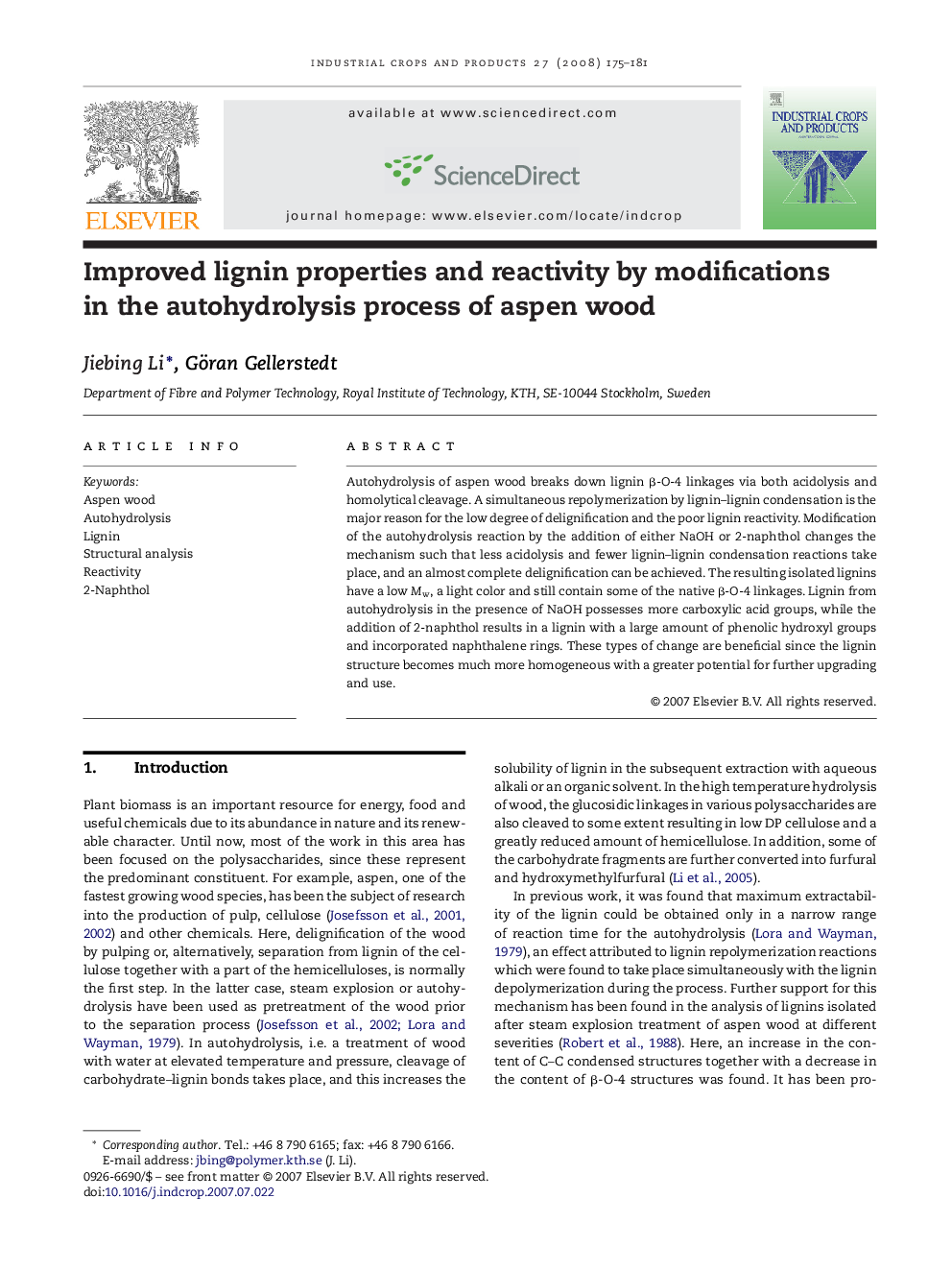| Article ID | Journal | Published Year | Pages | File Type |
|---|---|---|---|---|
| 4515248 | Industrial Crops and Products | 2008 | 7 Pages |
Autohydrolysis of aspen wood breaks down lignin β-O-4 linkages via both acidolysis and homolytical cleavage. A simultaneous repolymerization by lignin–lignin condensation is the major reason for the low degree of delignification and the poor lignin reactivity. Modification of the autohydrolysis reaction by the addition of either NaOH or 2-naphthol changes the mechanism such that less acidolysis and fewer lignin–lignin condensation reactions take place, and an almost complete delignification can be achieved. The resulting isolated lignins have a low Mw, a light color and still contain some of the native β-O-4 linkages. Lignin from autohydrolysis in the presence of NaOH possesses more carboxylic acid groups, while the addition of 2-naphthol results in a lignin with a large amount of phenolic hydroxyl groups and incorporated naphthalene rings. These types of change are beneficial since the lignin structure becomes much more homogeneous with a greater potential for further upgrading and use.
